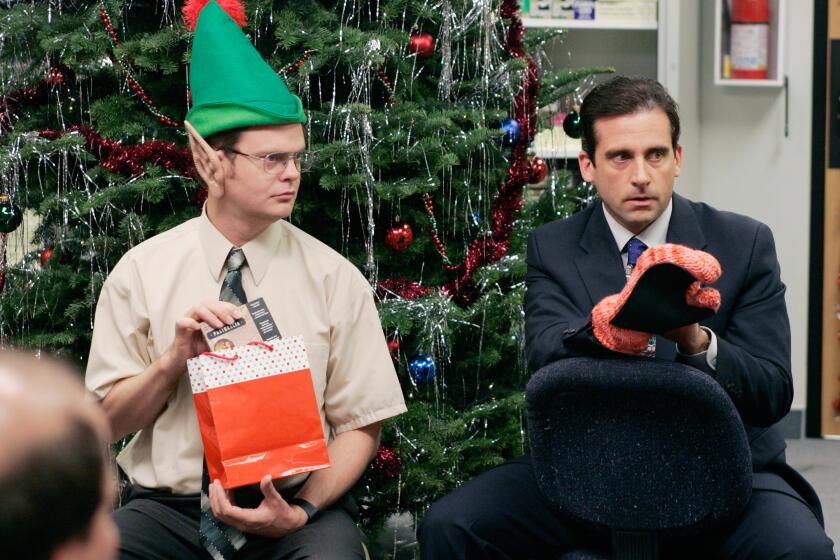U.S. employers add a solid 199,000 jobs and unemployment falls, signaling a still-sturdy labor market

The nation’s employers added a solid 199,000 jobs last month and the unemployment rate fell, fresh signs that the economy could achieve an elusive “soft landing,” in which inflation would return to the Federal Reserve’s 2% target without causing a steep recession.
Friday’s report from the Labor Department showed that the unemployment rate dropped from 3.9% to 3.7%, not far above a five-decade low of 3.4% in April.
The November job gain was a reminder that many employers continue to hire, though last month’s increase was inflated by the return of about 40,000 formerly striking auto workers and actors, who were not at work in October but returned in November.
Still, the job market is gradually decelerating along the lines that Fed officials have wanted to see. Hiring has averaged just over 200,000 a month in the past three months, down from an average of about 320,000 in the same period last year.
Wages are also growing at a slower but still-healthy pace. In November, average hourly pay rose 4% from 12 months earlier, down from a 5% pace earlier this year. Slower wage growth should help cool inflation pressures.
In one of his first major interviews since getting fired and rehired at artificial intelligence startup OpenAI, Sam Altman spoke with Trevor Noah.
The Fed has raised its key short-term rate from near zero to about 5.4%, a 22-year peak, leading to higher borrowing rates for consumers and businesses and lower inflation. Despite that headwind, the economy and the job market are still expanding. Layoffs remain historically low.
When the Fed meets next week, it is considered sure to keep its benchmark rate unchanged for the third straight time in light of the easing inflation pressures. Most economists and Wall Street traders think the Fed’s next move will be to cut rates, though that might not happen until the second half of 2024.
Even modest hiring helps ensure that consumers, who drive most of the economy’s growth, keep spending. Early reports on holiday shopping showed healthy growth in online sales.
Many of the most recent economic figures have pointed toward a potential soft landing. Companies are advertising fewer job openings, and Americans are switching jobs less often than they did a year ago, trends that typically slow wage growth and inflation pressures. Hiring is cooling, and price increases have moderated significantly.
Still, the number of people receiving unemployment aid, though still low, has risen. And for much of this year, hiring has been concentrated in just a few sectors — notably healthcare, restaurants and hotels and government — rather than broadly across the economy.
The Biden administration has cracked down on ‘junk fees’ charged by banks, airlines and concert ticket sellers, but they’re not yet eliminated entirely.
For now, most analysts are offering a positive outlook of slower but still steady growth and easing inflation. The economy is expected to expand at a modest 1.5% annual rate in the final three months of this year, down from a scorching 5.2% pace in the July-September quarter. Cooler growth should help bring down inflation while still supporting a modest pace of hiring.
The economy is still growing even after the Fed has raised its benchmark rate 11 times, from near zero in March 2022. The aggressive pace of those hikes has made mortgages, auto loans and business borrowing much more expensive.
At the same time, inflation has tumbled from a peak of 9.1% in June 2022 to just 3.2% last month. And according to a different inflation measure that the Fed prefers, prices rose at just a 2.5% annual rate in the last six months — not far below the central bank’s target.
Such progress has fueled speculation in the financial markets that the Fed could soon cut its benchmark rate, perhaps as early as March. Wall Street traders now expect five rate cuts next year, according to futures prices tracked by CME FedWatch. Most economists envision fewer.
Christopher Waller, a key Fed official who typically favors higher rates, buoyed the markets’ expectations last week when he suggested that if inflation kept falling, the Fed could cut rates as early as spring.
The classic end-of-year celebration — the office holiday party — has gotten a full makeover.
Fed Chair Jerome Powell, though, pushed back against such speculation Dec. 1, when he said it was “premature to conclude” that the Fed has raised its benchmark rate high enough to quell inflation. And it was too soon, he added, to “speculate” about when the Fed might cut rates.
But Powell also said interest rates are “well into” restrictive territory, meaning that they’re clearly constraining growth. Many analysts took that remark as a signal that the Fed is done raising rates.
More to Read
Inside the business of entertainment
The Wide Shot brings you news, analysis and insights on everything from streaming wars to production — and what it all means for the future.
You may occasionally receive promotional content from the Los Angeles Times.













